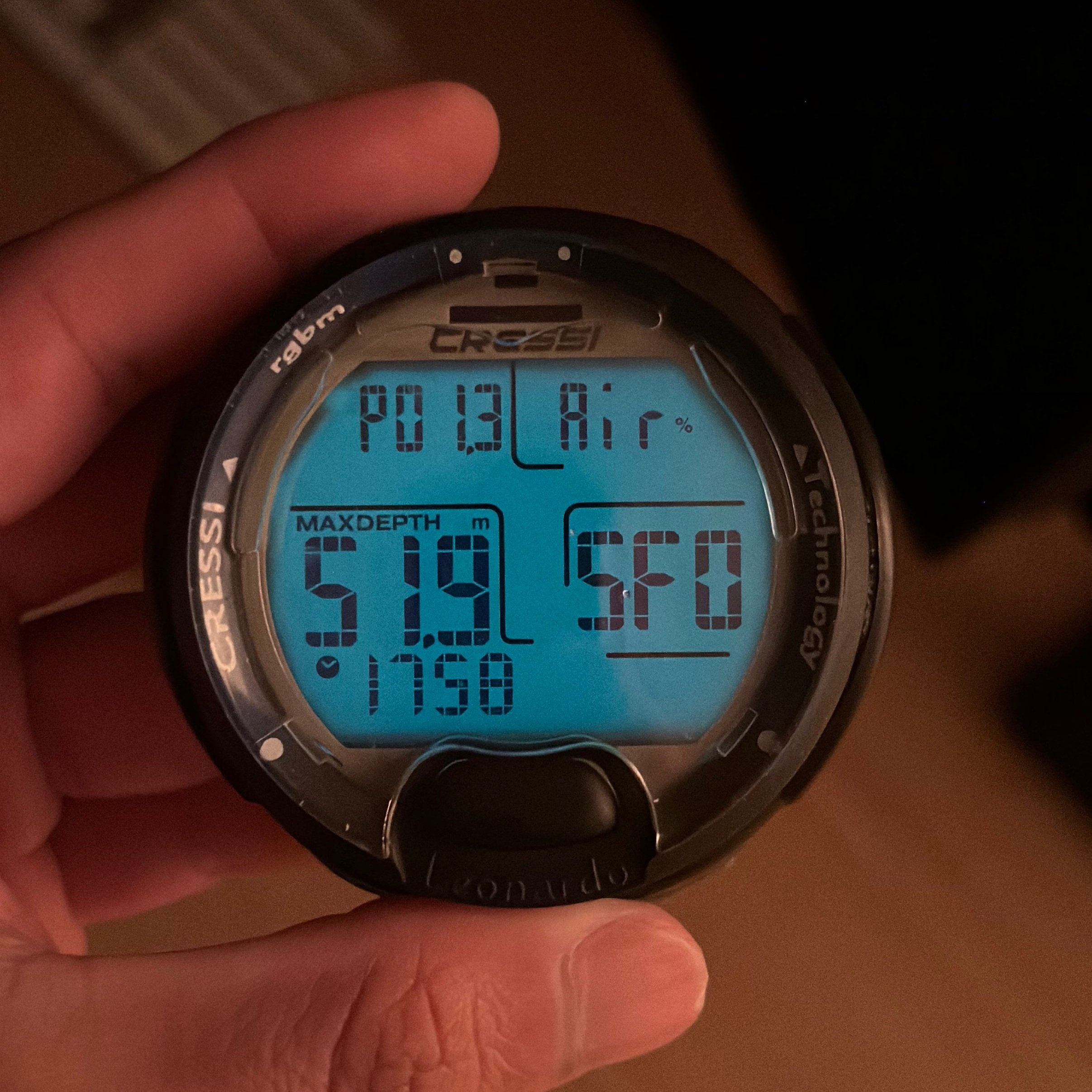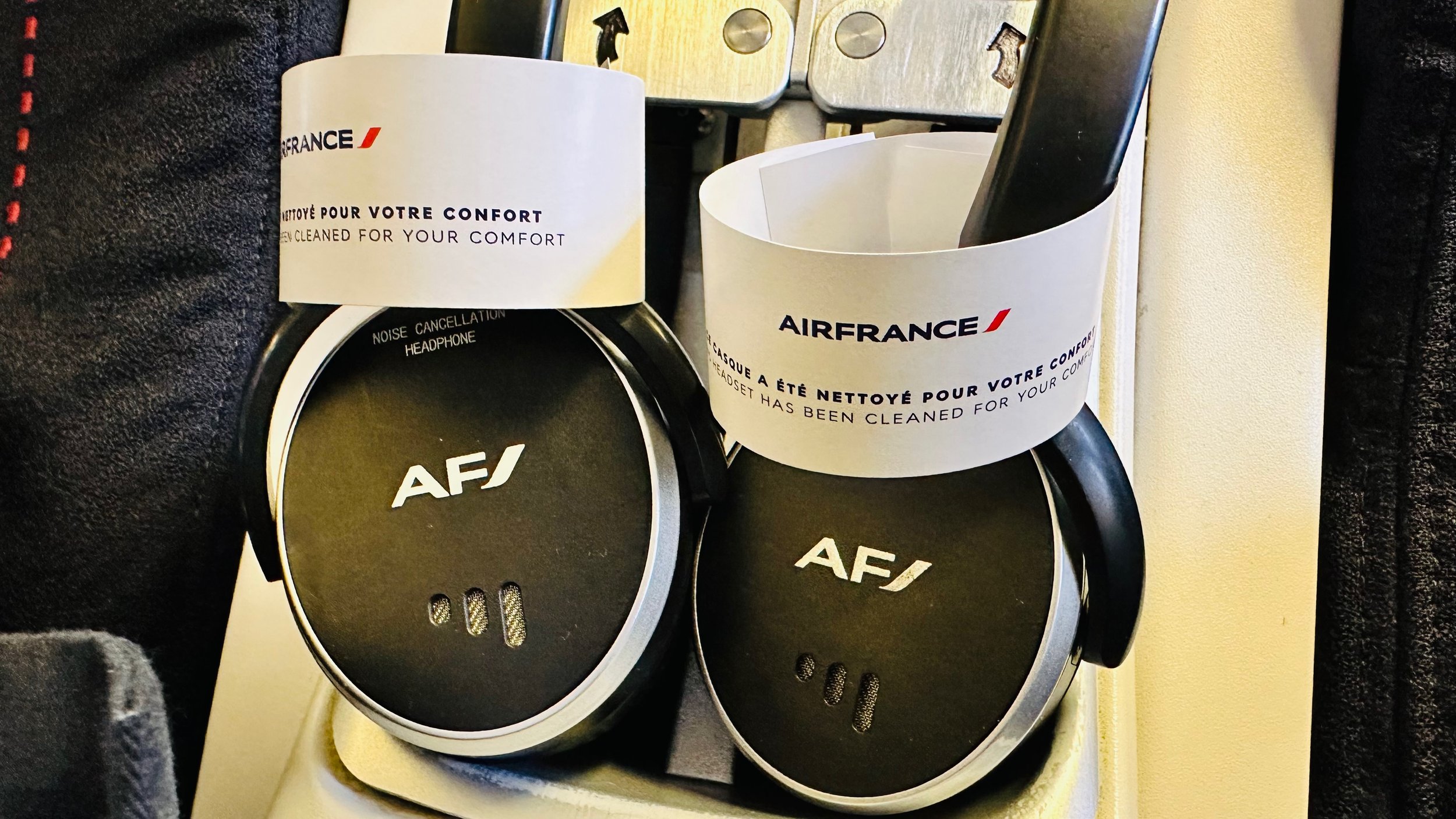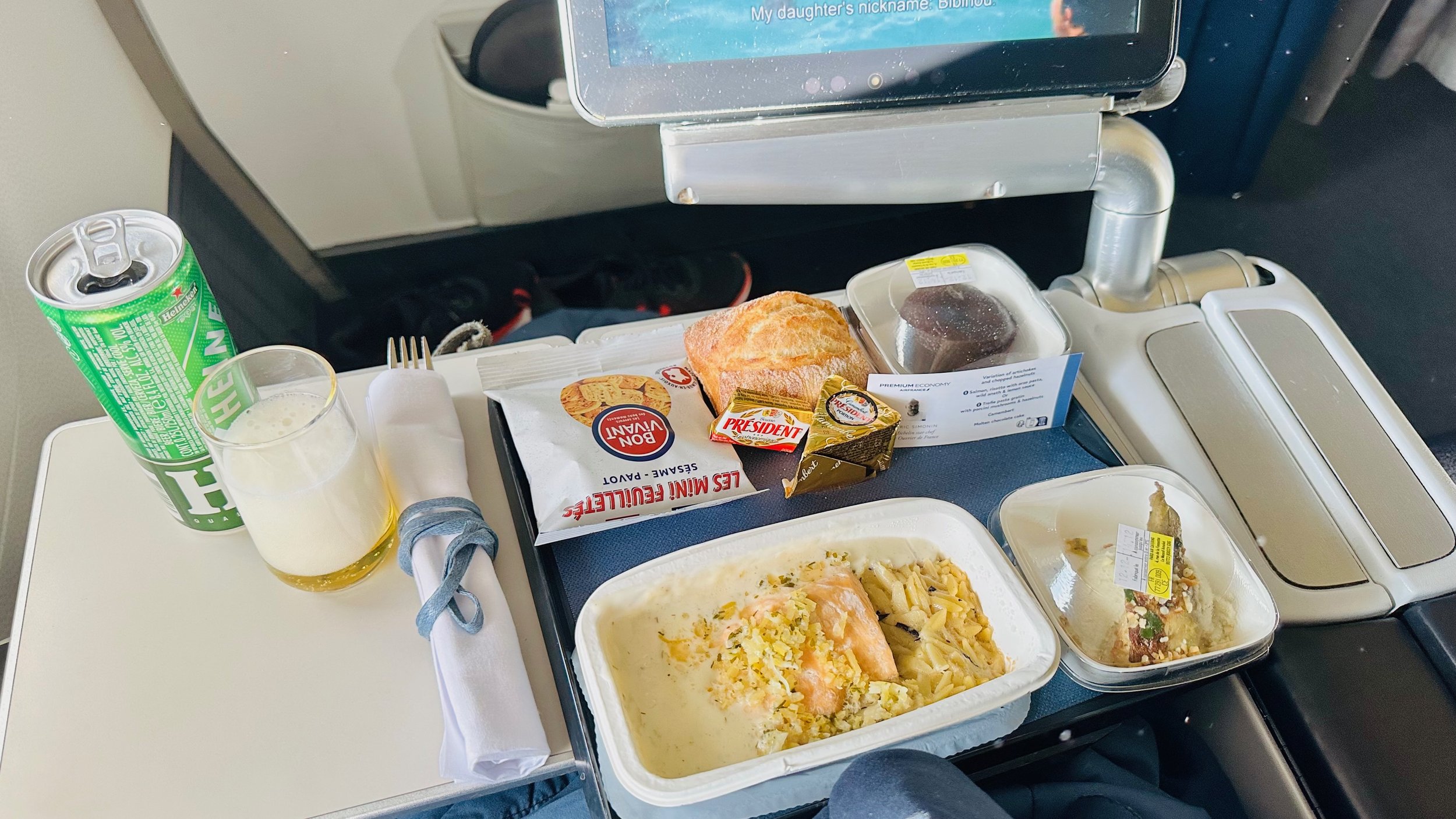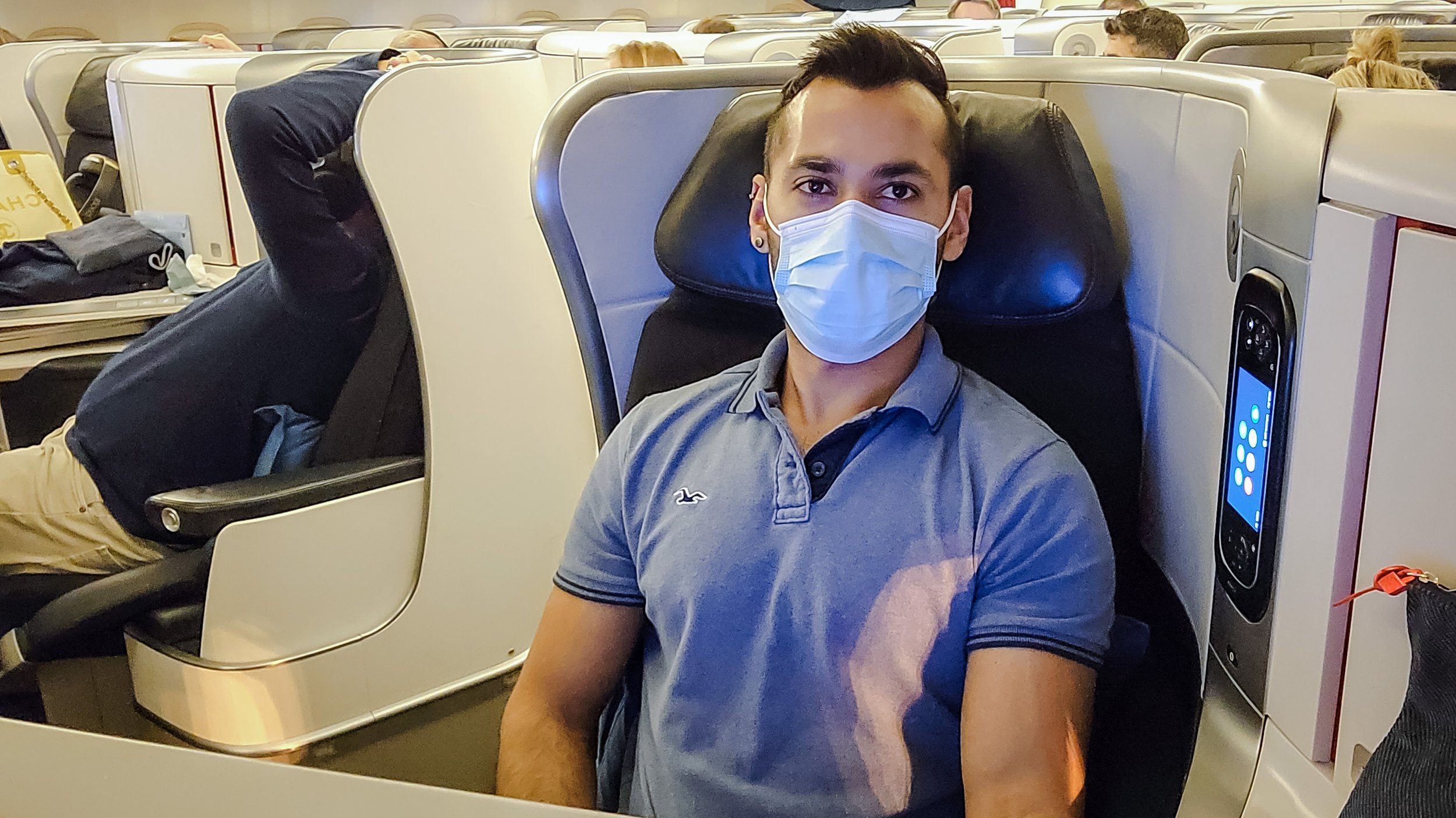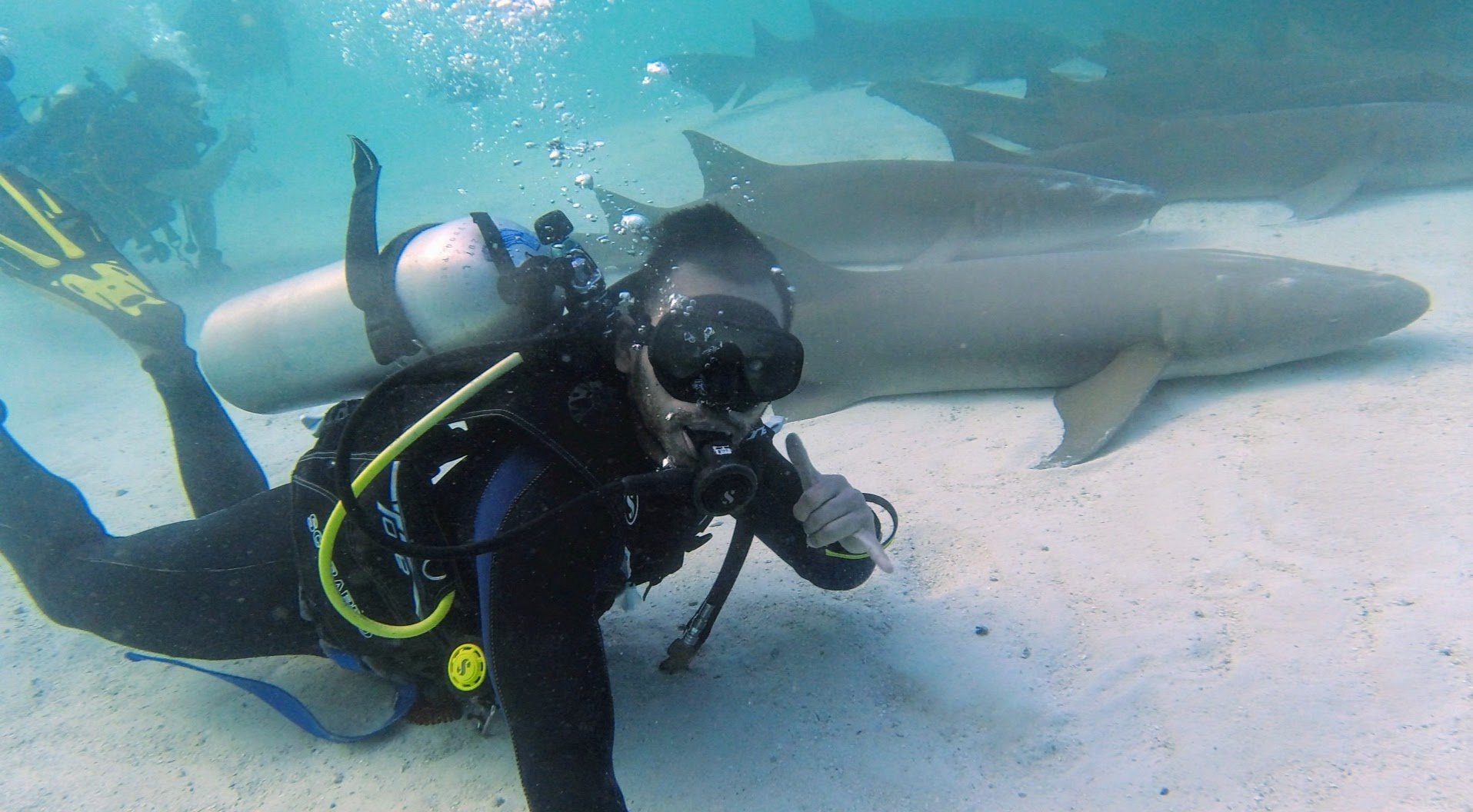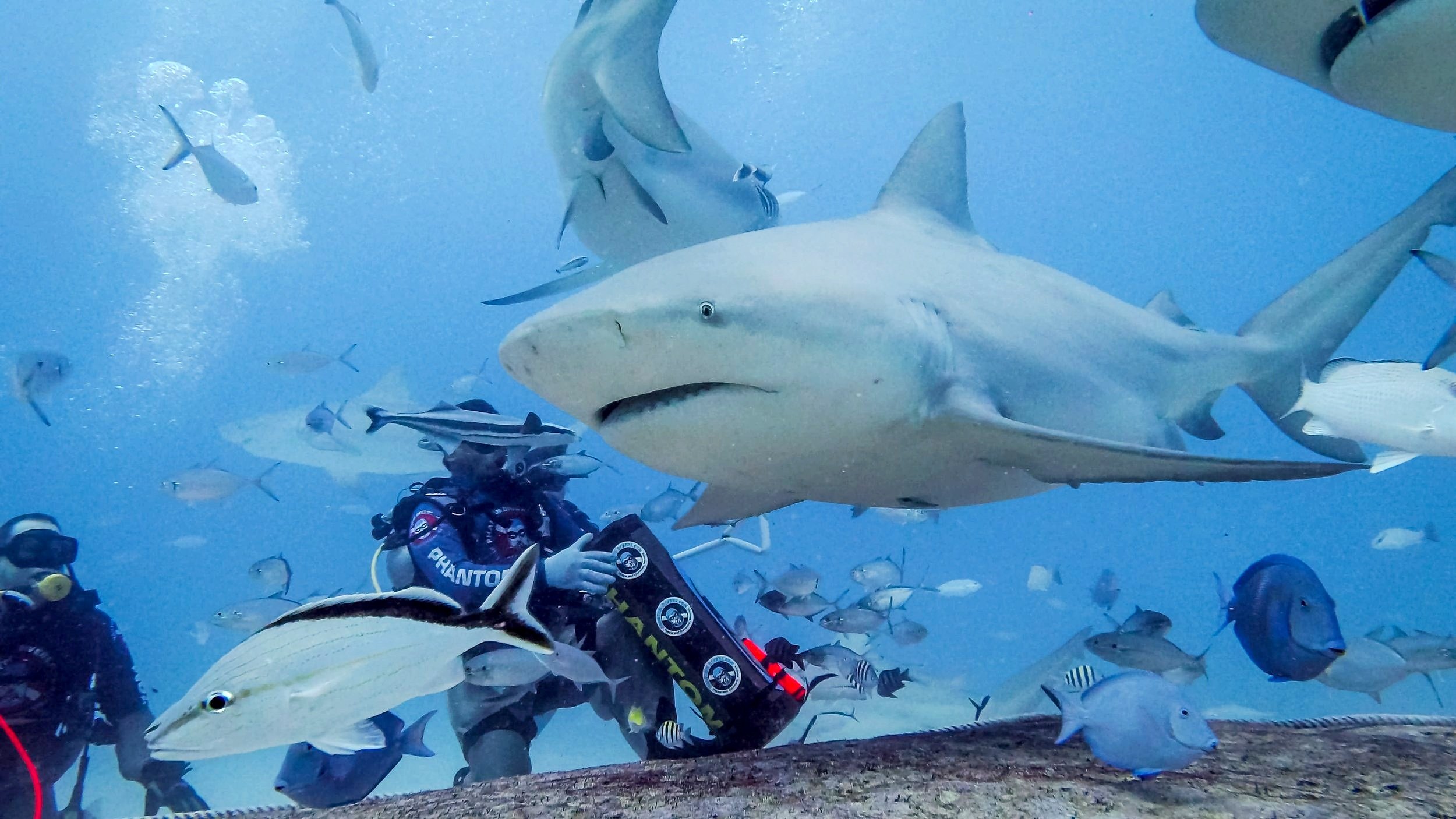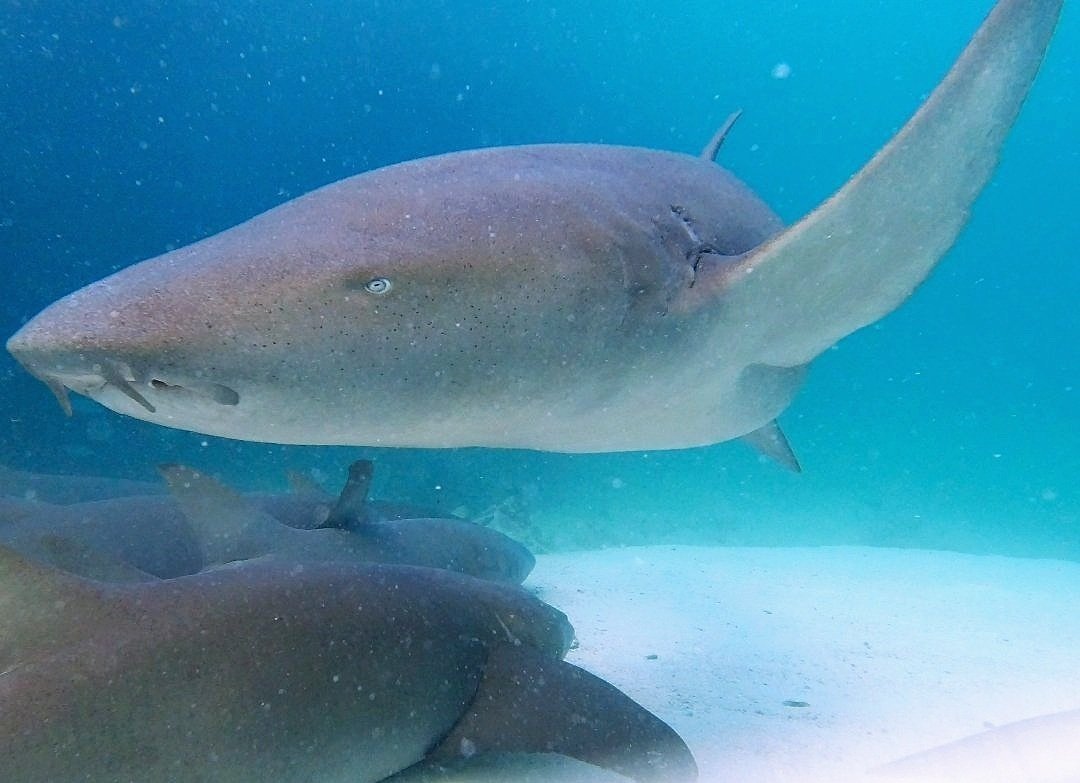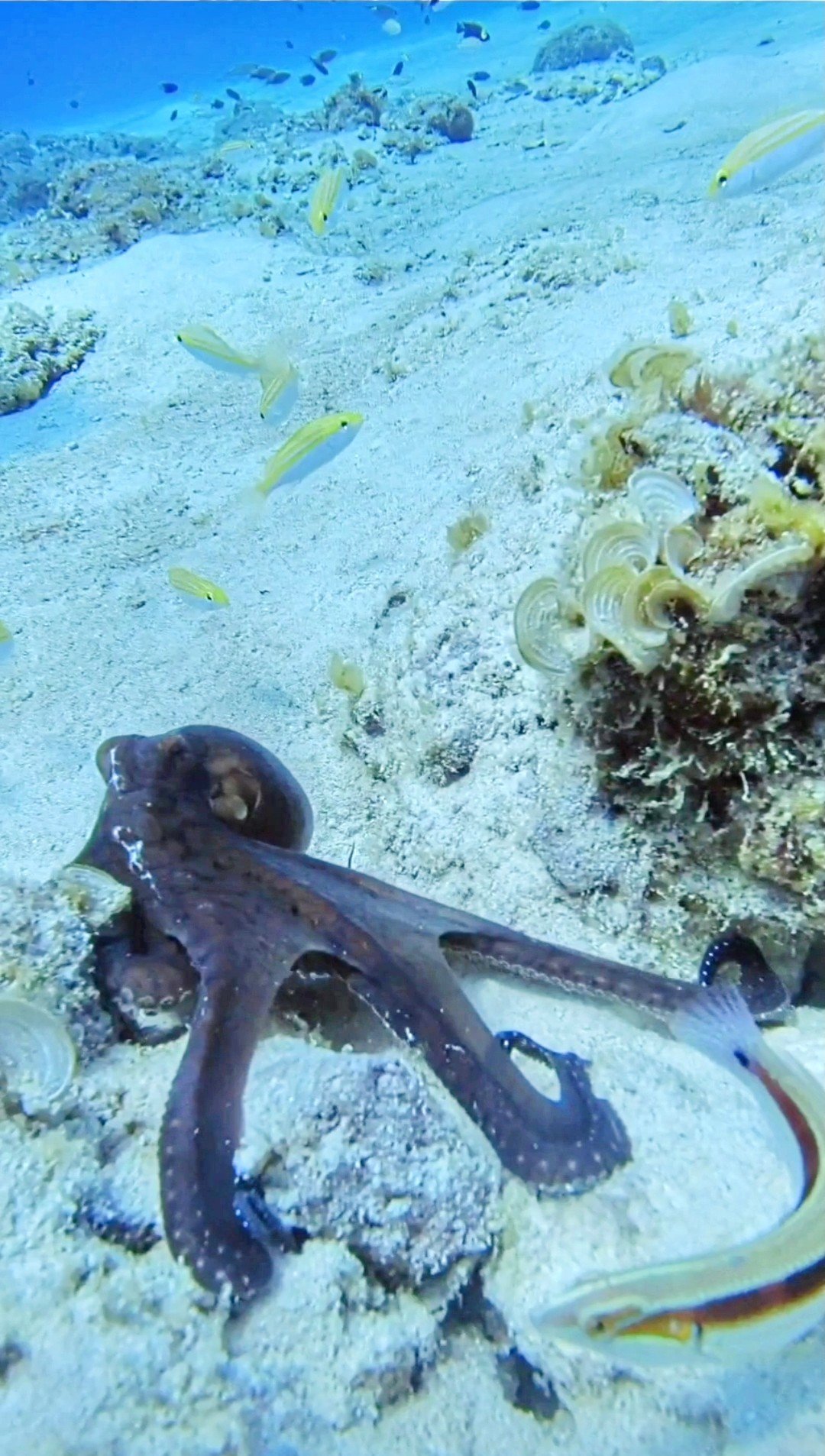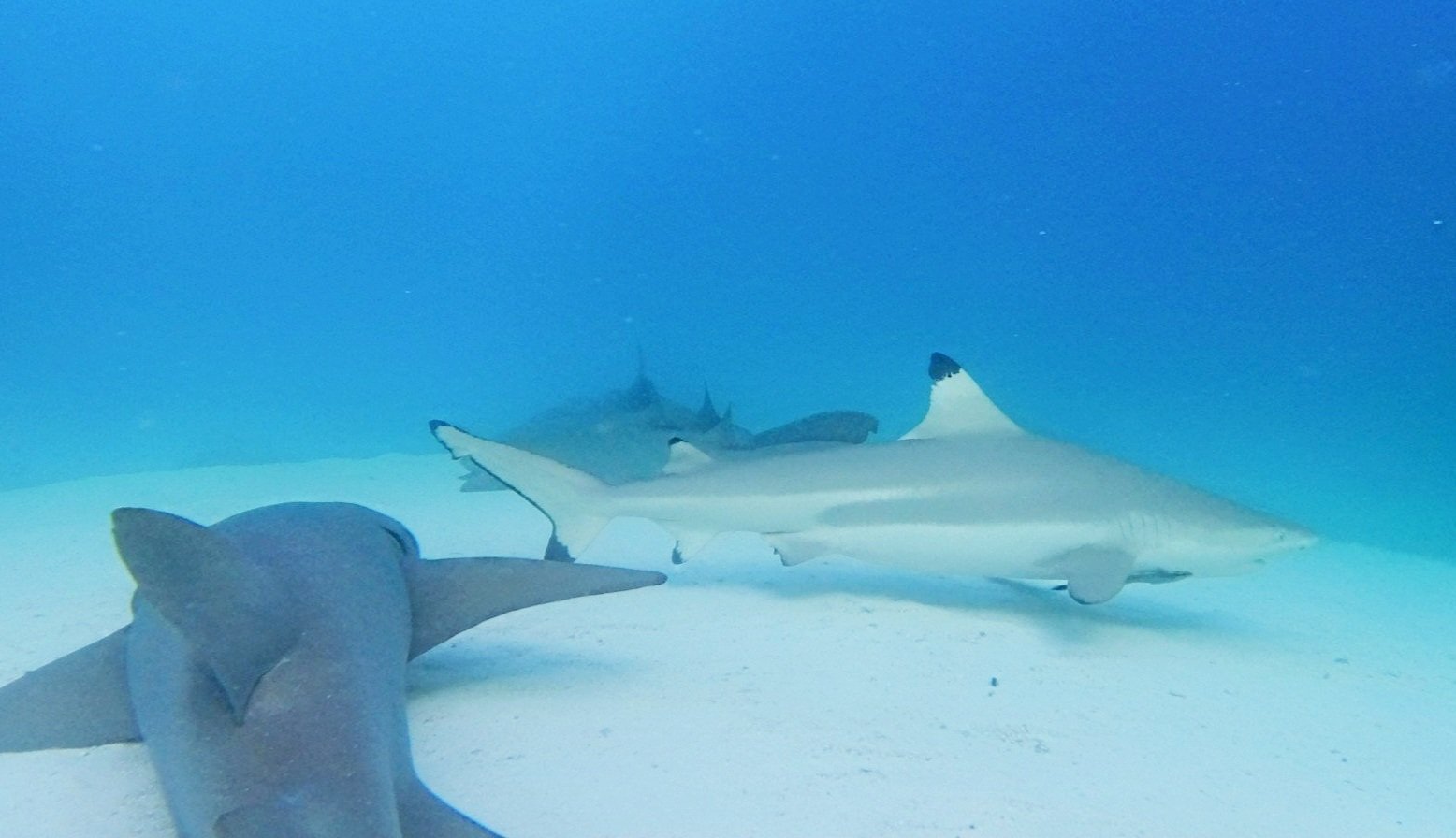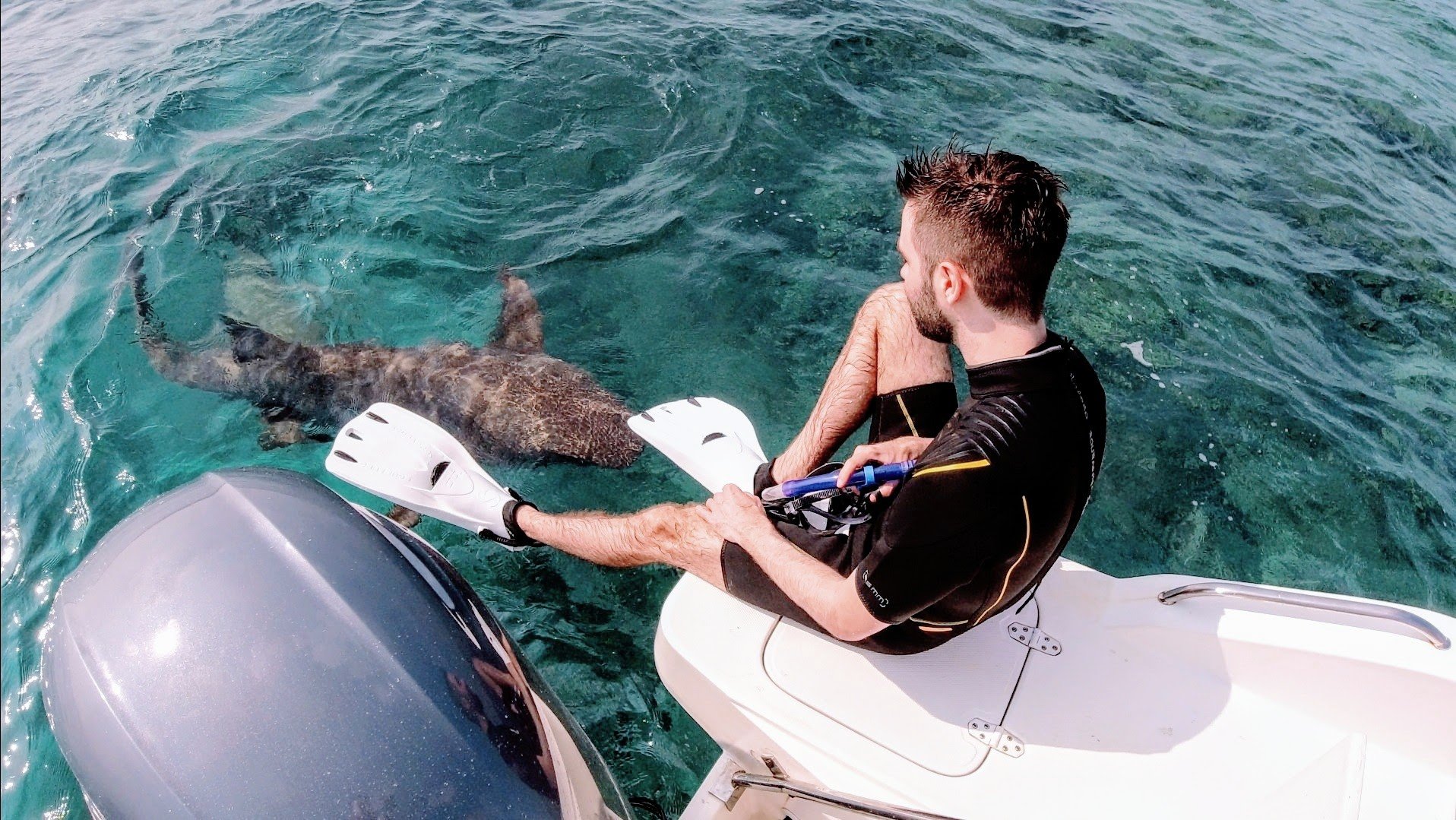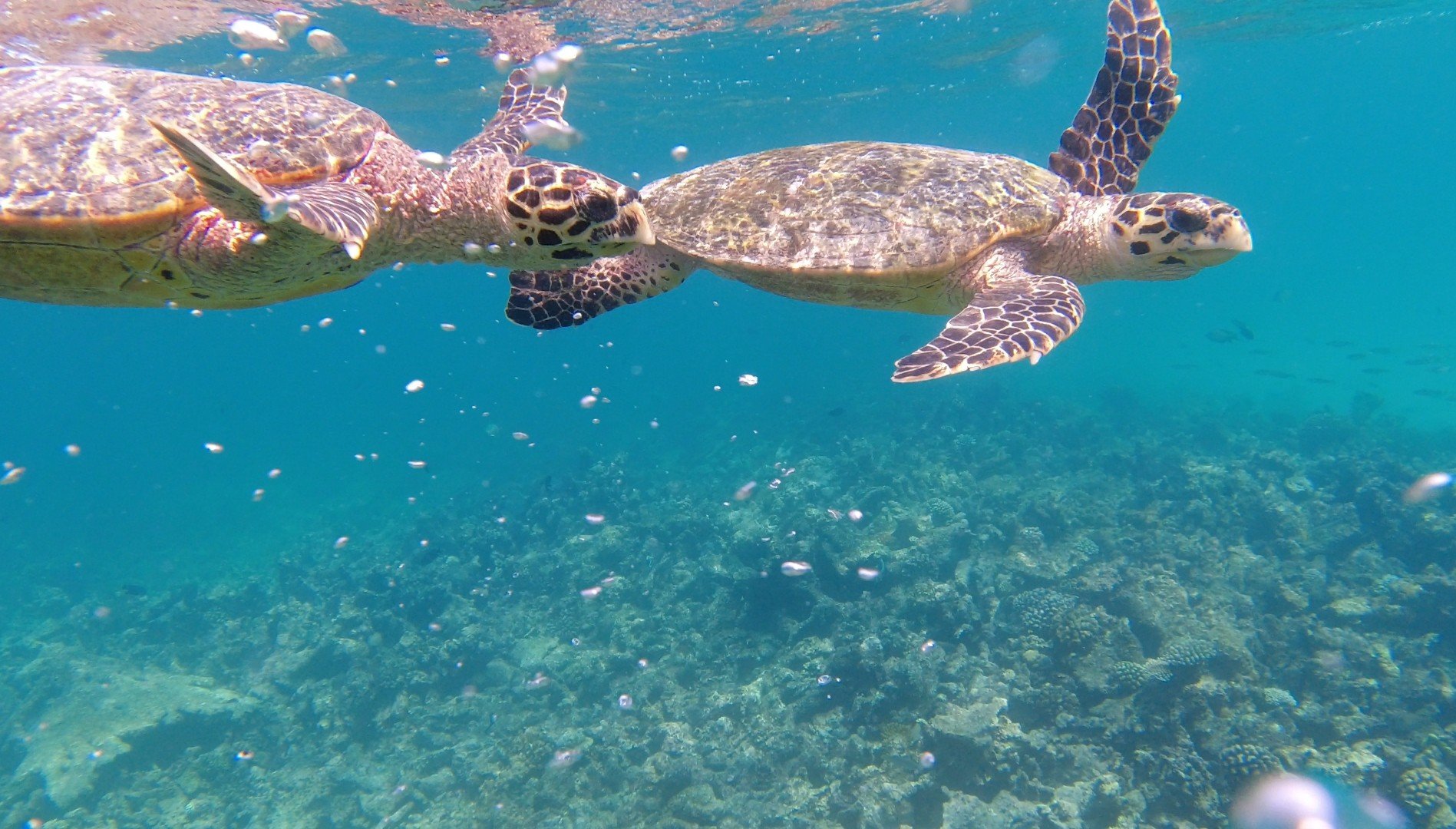This post is for non professional photographers or for people who love to scuba dive as a hobby and do not want to lug around big and heavy camera equipment with lights onto dive boats. It's for regular scuba divers who just want to capture their dives in an efficient way while travelling light.
When I was searching for a decent compact camera to bring on my dives, there wasn't a lot of information specific for scuba divers. At the time, I was hesitant to buy a DJI camera because I had only heard about GoPros which were much more expensive. However, DJI is popular for making the best drones on the market and my DJI drone works well and has great image quality so I decided to buy the DJI Osmo Action camera and I have loved using it ever since. While there are now newer versions with improvements, the original is still an excellent option with a lower price.
The following is a review based on my personal experience and I am not a professional product reviewer. I paid full price for my DJI camera. Some of the links below are Amazon affiliate links. This means that, at zero cost to you, I may receive a small commission from sales of certain items. Thank you for supporting the blog.
So below are my 5 reasons why I think DJI Osmo Action is great for scuba divers! (and snorkellers too)
1. No red light filter required
If you've been on a dive boat, you've probably noticed other divers with a GoPro and a red square on their camera. This is because water absorbs red light as you descend and that is the reason why your underwater footage often looks very green! To offset this, many people add a red light filter in front of the lens to add back the lost colour.
With the DJI Action Camera, there is no need for all that because it has a built in underwater mode. Simply go into your settings on turn on the underwater mode. The icon looks like a little fish and voila! It will properly white balance your underwater footage by correcting for the lack of red underwater (it essentially adds a red/purple tint to your videos, which when used underwater, makes the colours appear normal). The main reason I don't recommend using a red light filter is because it adds an additional layer of glass that reduces the amount of light available. An action camera’s sensor is already small so the last thing you want is to reduce the light when filming in less than ideal situations like underwater and with potentially poor visibility.
2. Long lasting battery
The DJI Osmo Action has a long lasting battery which according to DJI, lasts for for up to 63 minutes when shotting at 4K/60fps. If you are doing 2 dives, which is very common at many popular dive tours around the world, that means a single battery is enough for both dives unless you are planning to film your entire dive from start to finish. I usually have over 50% battery remaining after 2 dives. But I think the most important reason for having a single battery that can last 2 dives is my next point, which is that it leads to
3. Reduced lens fog!
You might be wondering how long battery life leads to less lens fog? If you've been scuba diving in tropical countries, you know that these places tend to have very high humidity. Unfortunately for your camera, this extra humidity in the air can often fog up your lens during a dive as the warm air inside your camera housing condenses when operated in the colder water. The fix I found is to always seal/close your camera housing while you are inside your hotel room with the AC on high so no humidity makes it inside your camera case. (also works inside the car). This has always worked for me and I never need to use any fog strips. However, they key here is not to open your dive casing until you are done using your camera, this means no changing batteries while you are on the boat because as soon as you open the case, the warm humid air makes its way inside, ready to ruin the videos on your next time. So that’s why in my opinion, having a single long lasting battery is key!
4. Quick Record
One of the great features of this camera is that you can start recording even if camera is off. The camera has an auto off function that turns off the screen then puts the camera in standby to save battery. If you press the record button while the camera is off, it will turn on and start recording right away. Thus, you can leave it off during your dive to save battery and immediately start recording when you come across something interesting.
5. It does not freeze!
One of the cons of owning a GoPro is that they can sometimes freeze. I’ve read this online and also asked Divemasters about it. As a scuba diver, this is a big no no for me because once the dive starts, I cannot open the camera to take out the battery and wait for it to restart. With my DJI Osmo Action, I thankfully haven’t had this issue during the years I’ve owned it.
Cons
The one downside I have noticed is that the angle is not as wide as a GoPro. This applies to the original DJI Osmo Action but has been fixed in the newer DJI Osmo Action 3 and DJI Osmo Action 4. The wide angle is important if you shoot yourself in close range in selfie mode (like vlogging) but otherwise it’s not a big issue.
For a more budget friendly option, you can check out the Akaso EK7000 although the image quality, battery life and video stabilization are not as good but it is what I used before I could afford a better camera.
Good to Know
I often shoot in 4K resolution which is high enough that you can take screen captures for still photos from your videos. The camera itself is waterproof to 10m according to DJI although I would never use it without an underwater case (I use this one).
So there you have it, 5 reasons why I think this camera is great for Scuba Divers! If I missed anything or if you are thinking of buying one and have any questions, let me know below!




